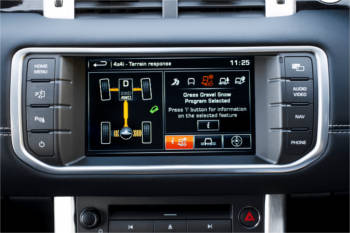There was a time when transport connectivity referred solely to how easy it was to get from A to B: how well were places ‘connected’?
More recently the discussion has been about the ‘connected car’: how are motor vehicles connecting with other vehicles and the infrastructure around them?
But there is an element missing. What about the ‘connected driver’? What technologies do motorists bring with them to the wheel? And what do they want these devices and applications to do for them?
Increasingly people open the car door armed with a whole plethora of devices ranging from mere mobile phones to iPads and tablets, smart watches and glasses.

In-car technology must deliver functionality
The potential for distraction is a serious one and something that the government is determined to tackle as a significant minority of road users remain more focused on their phone screens than wind screens. Just this week the Government announced proposals to raise the fixed penalty notice for the use of a hand-held mobile from £100 to £150.
Yet, reassuringly, there is also a significant section of the British driving population – 60% according to a just-out survey for us by Ipsos MORI - that believes phones and other devices should have a drive-safe mode, something that limits their use while on the move.
Tellingly, the same survey shows that when drivers are considering buying a car it is practical data about the vehicle that they are most likely to want to see technology deliver, with information about the condition of the car topping the table, followed by live traffic and congestion reports, and then route guidance.
What they don’t want is online gaming; well only a few want online gaming and the hope must be that this is to help keep the children entertained rather than to allow drivers themselves to play the latest arcade-style hit. When it comes to the benefits of connected driving features it is surprising to learn that more than half (51%) of drivers who already use them feel they have not improved the travel experience.
These people are likely to be among the significant proportion of road users who struggle to get an adequate signal on their devices. While their smart phone might easily pinpoint the way from London to Edinburgh in the comfort of their urban front room, when they hit the open road patchy network coverage means many will struggle to make a phone call, let alone get the sat-nav app to work properly.
Our research shows that 136,000 miles (56%) of the British road network has no 4G network coverage at all. Some 4,500 miles (2%) hasn’t even got 2G coverage making it impossible to ring for help in the case of an accident or a breakdown.
What lessons are to be learned? One must be that people don’t want to use technology just for the sake of it; they want it because it makes their lives easier, and two, the promise of that functionality must be backed up in reality. For, whatever environment you are in, there is nothing more distracting and frustrating than trying to use a mobile device when it has no signal.
Steve Gooding is director of the RAC Foundation